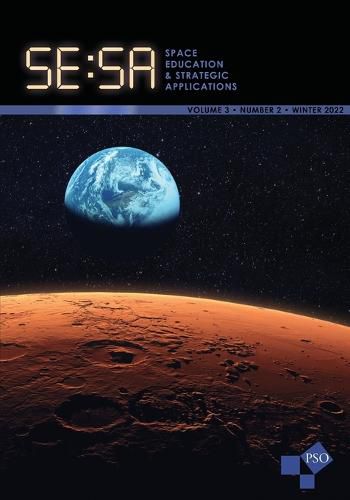Readings Newsletter
Become a Readings Member to make your shopping experience even easier.
Sign in or sign up for free!
You’re not far away from qualifying for FREE standard shipping within Australia
You’ve qualified for FREE standard shipping within Australia
The cart is loading…






This new era of space exploration brings with it an array of new challenges and the need for new policies, technologies, and medical remediations to govern the use of space resources, protect astronauts from the dangers of the space environment and preserve both scientific and environmental agendas on other worlds as well as our own. In addition, it is becoming increasingly important to develop robust security measures to protect national assets in space. Current space policies and treaties will need to evolve to address these challenges, and international agreement on space policies is vital. In this exciting and rapidly evolving space environment, the editors are pleased to present the third issue of the Space Education and Strategic Application s (SESA) Journal, together with the American Public University System and the Policy Studies Organization. The articles presented in this issue directly speak to the challenges and opportunities of the current space environment. Dr. Chapman's analysis of the evolving domain and policies of the U.S. Space Force speaks to its essential role in securing national resources in the increasingly complex international arena of space, particularly in lower earth orbits where satellites and sensors vital to national security reside (Chapman, 2022). Duke (2022) also addressed issues of national security in space in near Earth, lunar, and Martian environments. The author underscores the pivotal role space plays in national defense, the dangers of space warfare and anti-satellite weapons, and the implications of exploitation of space resources. Taylor Nichols' article looks forward to the potential for human exploration of Mars and presents an analysis of the effects of global environment conditions on radio propagation. This article examines the potential to apply GIS modeling to Mars to better understand the communications challenges that future missions will face (Nichols, 2022).
$9.00 standard shipping within Australia
FREE standard shipping within Australia for orders over $100.00
Express & International shipping calculated at checkout
This new era of space exploration brings with it an array of new challenges and the need for new policies, technologies, and medical remediations to govern the use of space resources, protect astronauts from the dangers of the space environment and preserve both scientific and environmental agendas on other worlds as well as our own. In addition, it is becoming increasingly important to develop robust security measures to protect national assets in space. Current space policies and treaties will need to evolve to address these challenges, and international agreement on space policies is vital. In this exciting and rapidly evolving space environment, the editors are pleased to present the third issue of the Space Education and Strategic Application s (SESA) Journal, together with the American Public University System and the Policy Studies Organization. The articles presented in this issue directly speak to the challenges and opportunities of the current space environment. Dr. Chapman's analysis of the evolving domain and policies of the U.S. Space Force speaks to its essential role in securing national resources in the increasingly complex international arena of space, particularly in lower earth orbits where satellites and sensors vital to national security reside (Chapman, 2022). Duke (2022) also addressed issues of national security in space in near Earth, lunar, and Martian environments. The author underscores the pivotal role space plays in national defense, the dangers of space warfare and anti-satellite weapons, and the implications of exploitation of space resources. Taylor Nichols' article looks forward to the potential for human exploration of Mars and presents an analysis of the effects of global environment conditions on radio propagation. This article examines the potential to apply GIS modeling to Mars to better understand the communications challenges that future missions will face (Nichols, 2022).